As we delve deeper into 2024, the landscape of search engine optimization (SEO) proves to be a dynamic realm where the only constant is change. For SEO Content Managers and Digital Marketing Strategists, keeping pace with the evolving nature of search engine algorithms is not just an option—it’s an imperative for online visibility and success. The need to reimagine your SEO content strategy is more crucial now than ever as we encounter new challenges and opportunities that come with technological advancements and shifting user behaviors.
Learn More About What To Expect As a Marketer in 2024
In preparation for 2024, we will touch upon several key areas that are fundamental to crafting a resilient and effective SEO content strategy. These areas include the direct impact of search engine algorithm updates and their reverberations on content types and user experience, the integration of emerging content types that resonate with our target audience, and the influence of AI and machine learning that’s reshaping content creation and optimization.
Moreover, as the markers of success continually transform, we will break down the evolving KPIs for measuring the victory of our SEO content strategies. These indicators offer a window into the effectiveness of the content that bridges the gap between our brands and potential customers. Enhancing the user experience is another critical strategy we will dissect to understand how increased user engagement can be a powerful SEO catalyst.
Finally, we will navigate the new ways of topic ideation and keyword research to ensure relevance and competitiveness in our respective niches. This all-encompassing overview will be a culmination of learnings and strategy adjustments that I’ve accumulated throughout this year of AI growth, major algorithm changes, and changes to the overall future of search. This is my playbook for 2024 SEO content strategies.
Navigating Search Engine Algorithm Updates
The landscape of search engine optimization is continually shaped by algorithm changes, and 2023 served as a testament to this ever-evolving journey. SEO Content Managers are tasked with the critical responsibility of not only interpreting these changes but also pioneering strategies to adapt and thrive amidst these seismic shifts in digital marketing. These shifts came in the form of 4 major Broad Core updates.
Overview of Google’s 2023 Algorithm Changes
The 10 Google algorithm updates, 4 of which were “Broad Core Updates” in 2023 have been pivotal in redefining SEO content strategies. These updates, though not targeting specific pages, have helped improve rankings on previously under-rewarded content, making it evident that quality and relevance are becoming increasingly crucial. They underscore the importance of delivering an SEO content strategy that is not static but evolves with the dynamic landscape of search intent and user experience.
March 2023 Broad Core Update
The March 2023 update was an essential algorithm update that re-prioritized the Google rankings. As a result, pages that were previously under-rewarded may have received better rankings. Google made the following analogy to explain how a core update operates,
“One way to think of how a core update operates is to imagine you made a list of the top 100 movies in 2021. A few years later in 2024, you refresh the list. It’s going to naturally change. Some new and wonderful movies that never existed before will now be candidates for inclusion. You might also reassess some films and realize they deserved a higher place on the list than they had before.”
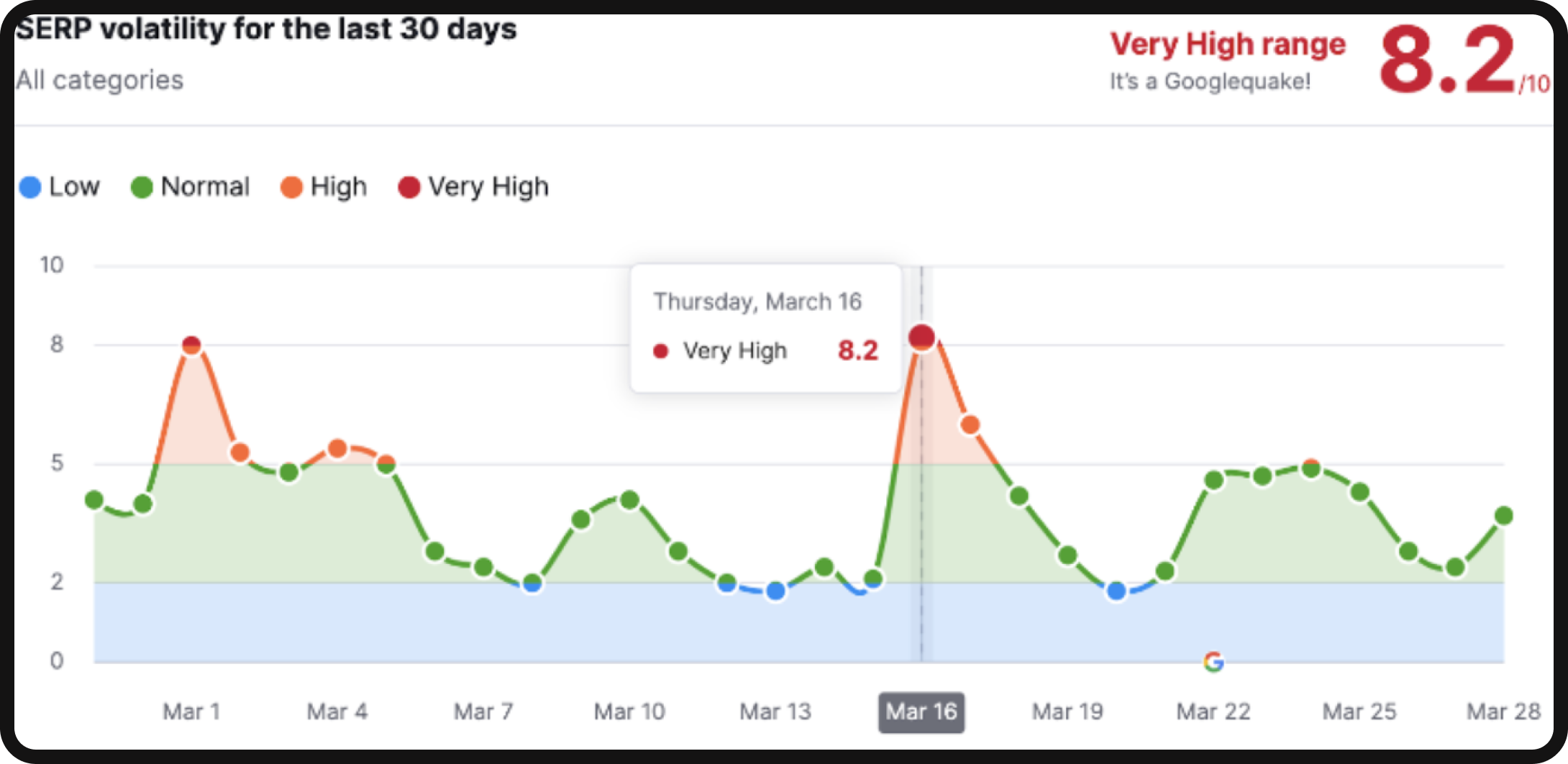
Peak SERP volatility from March 2023 Google Algorithm Update
August 2023 Broad Core Update
The goal was to prioritize the rankings of pages that provided the most value to users. Despite the lack of specifics (as always), this was a general push for content teams to make sure they were providing unique perspectives and adhering to the recommended content pillars of experience, expertise, authority, and trustworthiness (E-E-A-T).
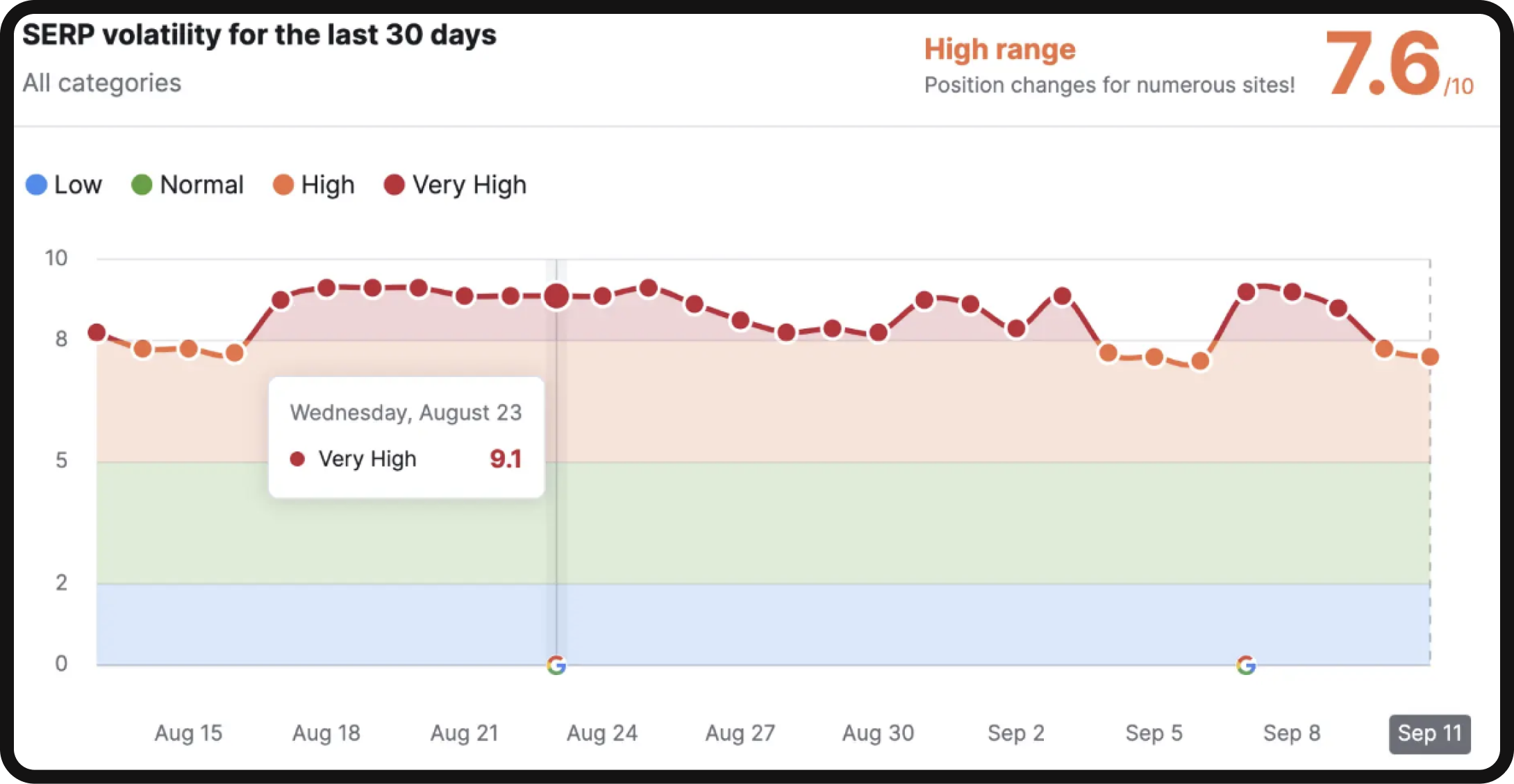
SERP volatility before and during August 2023 Google Algorithm Update
One improvement that’s often beneficial to make after similar updates is to review old content. Make sure information is still accurate and up-to-date. Analyze the search engine result pages (SERP) and identify potential gaps in your content so you can fulfill all of a user’s needs without them having to conduct a second search.
October 2023 Broad Core Update + Spam Update
This update was designed to improve spam detection systems and also improve coverage in other languages (Turkish, Vietnamese, Indonesian, Hindi, Chinese, and more). SpamBrain is their AI-based spam-prevention system that automatically enforces Google’s spam policies. Spam policies that mostly affect SEO content include hidden text and links, keyword stuffing, link spam, scraped content, and automatically generated content.

SERP volatility from October 2023 Google Algorithm Update
November 2023 Broad Core Update
The 4th update, and hopefully the last of the year. This update caused the highest volatility in content rankings all year. I noticed a drastic increase in the number and different types of featured results, including Google-generated listicles.
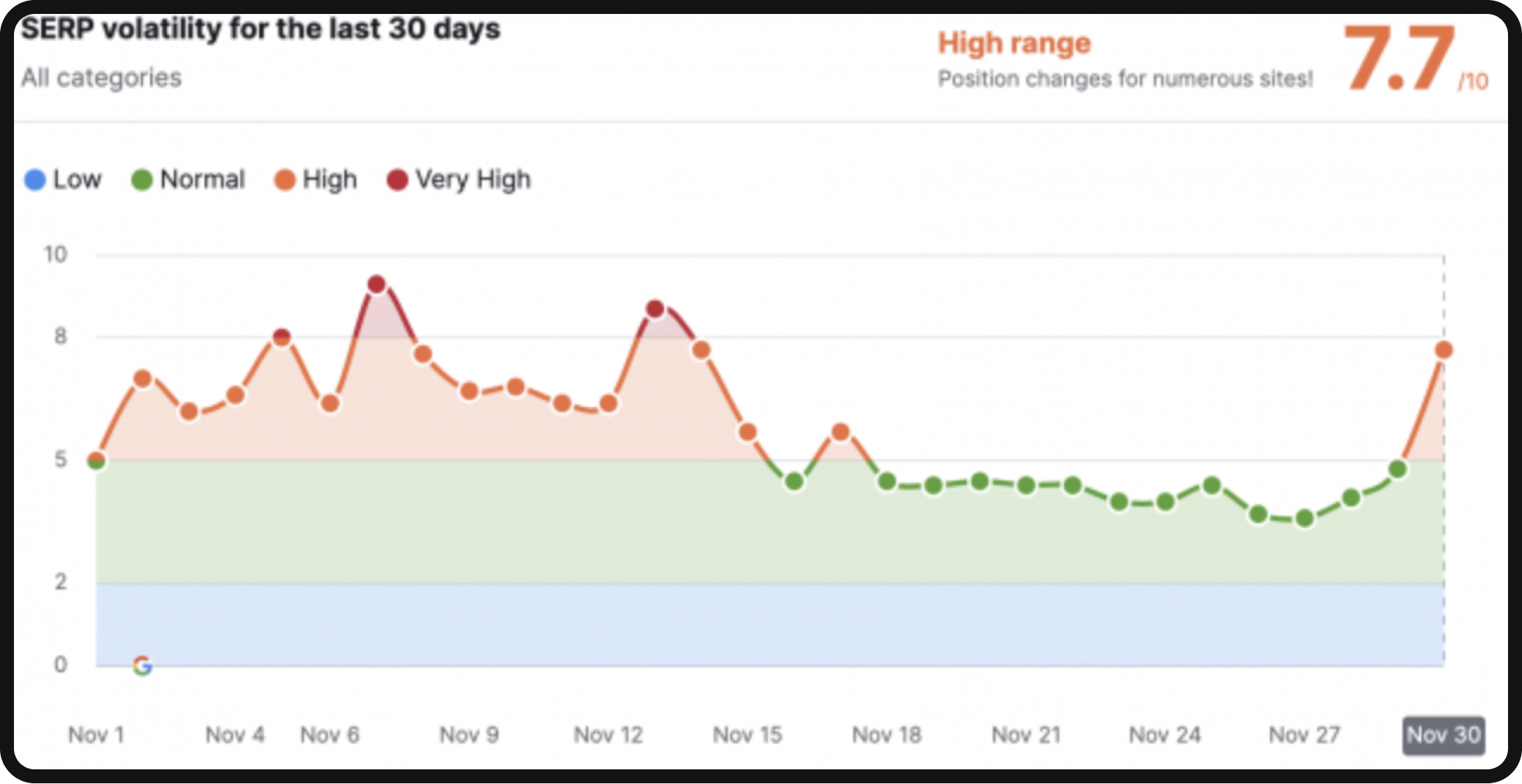
SERP volatility from November 2023 Google Algorithm Update
The Effects of Algorithm Updates on Page Rankings
Following these updates, many websites witnessed a significant alteration in their page rankings. The underlying message is clear: providing value-rich, user-centric content is imperative. As our target audience’s needs evolve, so must the content we create. Adhering to E-E-A-T is now more critical than ever in achieving and maintaining high search engine visibility for our digital properties.
Strategies for Adapting to Algorithm Changes
Most of the time if your content is negatively impacted by algorithm updates it doesn’t necessarily mean something is wrong with your content. Websites that are creating quality useful content don’t have to worry about minor ranking or traffic fluctuations. However, when updates are tanking your traffic it’s time to evaluate content improvements.
- Content Review and Update Process Based on E-E-A-T Factors
Embracing the core tenets of experience, expertise, authority, and trustworthiness can aid in weathering the impact of these algorithm upheavals. This involves a meticulous review and refresh of existing content, ensuring its accuracy and relevance. By injecting new life into older content, and tailoring it to satiate the updated criteria, SEO content managers can safeguard their websites against the brunt of fluctuating search engine algorithms.
- SERP Analysis for Content Gap Identification
A shrewd content marketer knows that analyzing the search engine results page is akin to reading a battlefield map. Identifying content gaps and fulfilling unmet search queries can be a substantial advantage. This approach not only ensures the coverage of a wider range of target keywords but also helps in sculpting a comprehensive information repository that potentially elevates domain authority.
- Utilizing Google’s Content and Quality Questions for Analysis
Google’s Content and Quality Questions serve as a prime resource for scrutinizing the caliber of SEO content. These questions guide us in evaluating our content’s originality, completeness, and value proposition. By rigorously assessing our content against these criteria, SEO Content Managers can polish their offerings to resonate more deeply with search algorithms and user expectations.
Looking For More Ways To Evaluate The Helpfulness Of Your Content?
Enhancing User Experience and Engagement
In 2024, user experience (UX) and engagement are the lifeblood of an effective SEO content strategy. As search engine optimization becomes more intertwined with UX, we must sharpen our focus on the user’s journey from first click to final interaction. Aligning closely with Google’s mobile-first indexing and the nuanced user behavior metrics signifies a pivotal step towards achieving a holistic SEO strategy that synergizes technical prowess with human-centric content.
Google’s mobile-first indexing update
In 2023 Google launched a core algorithm update that included mobile-first indexing. They’ve been trying to launch mobile-first indexing for years and the time is finally here. With the full roll-out of mobile-first indexing, a superb mobile experience is no longer a luxury, but a necessity. Mobile optimization is pivotal in a world where the majority of internet browsing occurs on handheld devices. A mobile-friendly website is not just about scaling down desktop content, but about rethinking the structure and delivery of content that’s intuitively accessible on smaller screens.
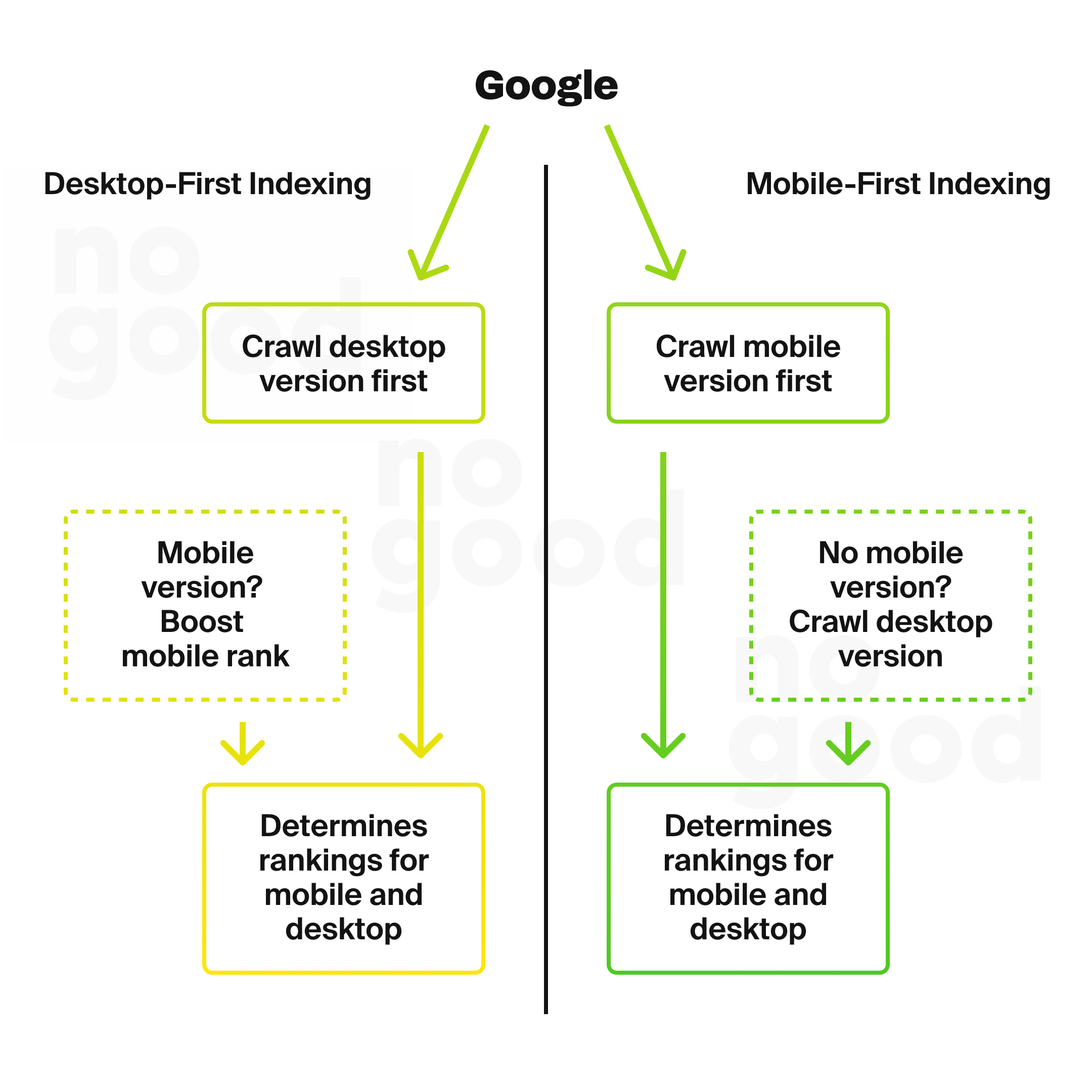
Google Core Web Vitals: LCP, FID, and CLS
Google Core Web Vitals are the pillars supporting mobile user experience. Largest Contentful Paint (LCP), First Input Delay (FID), and Cumulative Layout Shift (CLS) are the trifecta that Google uses to measure the quality of UX on a website. These metrics cumulatively assess the speed and stability of content loading, as well as the responsiveness of a website to user interactions. In the optimization battle, striking a balance between visual richness and load performance is key to maintaining competitive SERP positions.
Interactive content implementation
As website content managers look to increase time on pages and reduce bounce rates, integrating interactive elements into web pages is a forward-thinking tactic. From interactive infographics to calculators, quizzes, and polls, such content types draw users in, prompting them to interact with the information presented actively. This interaction not only delivers a memorable experience but also provides valuable user data that can further refine a solid SEO strategy.
From an SEO perspective, high levels of interaction signal to search engines that the content fulfills user intent, a metric that is gaining prominence in ranking algorithms. In addition, interactive content often encourages external links, enhancing the site’s backlink profile and overall SEO health.
Encouraging content sharing
In the digital space, sharing is the currency of visibility. Crafting shareable content amplifies reach exponentially, not just through direct traffic but also by building brand presence across various platforms. A successful SEO content strategy embeds social sharing capabilities within content, making it easy and intuitive for users to distribute material they find valuable.
Each share holds the potential to become a backlink—the cornerstone of off-page SEO. As users share content across blogs, forums, social networks, and other digital avenues, the cumulative effect can dramatically bolster a site’s backlink profile. Consequently, this activity contributes to domain authority and improves search rankings, driving more relevant traffic to the website.
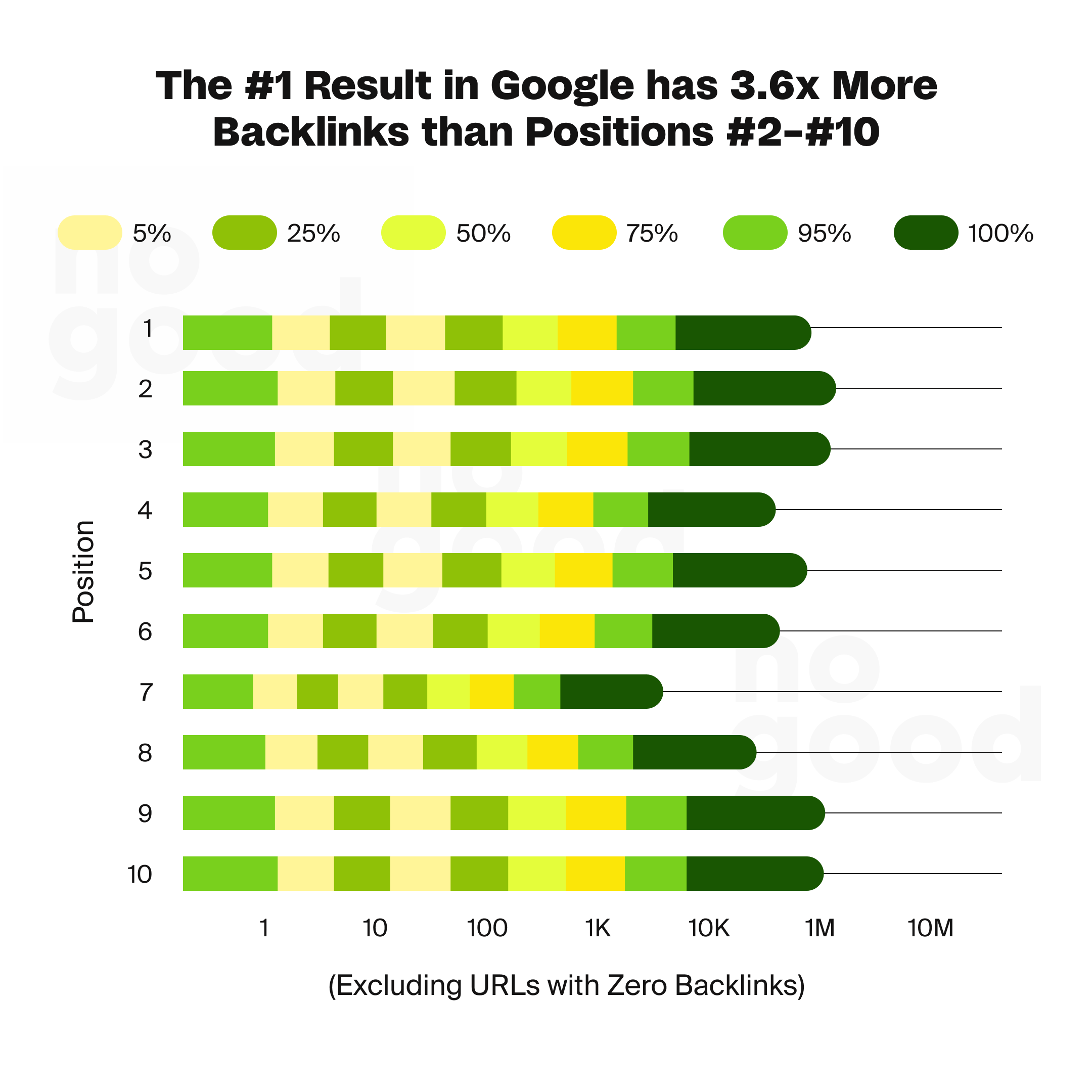
Integrating Emerging Content Types Into Your Strategy
The dynamic nature of SEO mandates the continual adoption of innovative content types. A well-rounded SEO content strategy embraces new formats that resonate with the evolving preferences and behaviors of online audiences. In 2024, two forms of content are becoming increasingly prominent in captivating visitors and bolstering SEO effectiveness: video content and downloadable assets.
Video Content
If you’ve read The Future of Search: The Unbundling of Google you know that “…in 2022, Google reported that 40% of GenZ audiences chose to use social search on platforms such as TikTok and Instagram over Google.”
Learn More About The Battle For Search
Video content has increasingly become the preferred medium for younger audiences, especially Gen Z. This demographic, known for its short attention span and visual learning tendencies, heavily relies on video for information and entertainment. Incorporating video content is not just about catering to current trends; it’s a strategic move to engage with an audience that will define future consumer behaviors.
High-quality, informative videos can significantly prolong the duration of site visits, reducing bounce rates and signaling to search engines that your site provides valuable content. These factors contribute immensely to a positive user experience, which search engines like Google factor into their ranking algorithms.
To maximize the SEO benefits of video content, we have to increase video visibility in search engine results pages (SERPs). This includes optimizing video titles, descriptions, and meta tags with target keywords, creating transcripts for accessibility and additional indexable text, and hosting videos on platforms that are frequently crawled by search engine bots. Another facet to consider is the potential of videos to appear in rich snippets, which can significantly increase click-through rates.
By 2024, it’s expected that video will dominate internet traffic even more than it does today. We are already starting to see these shifts at the end of 2023 with an increase in video snippets and featured clips in search results.
Downloadable Content
Downloadable content such as eBooks, whitepapers, and in-depth reports serve as potent tools for lead generation and nurturing. Embracing this type of content allows you to provide comprehensive, value-laden materials that audiences are willing to exchange their contact details for. This transaction begins a relationship between the company and the consumer, offering an opportunity to guide potential customers down the conversion funnel.
In line with Google’s E-E-A-T guidelines, authoritative downloadable materials can enhance your domain’s reputation. By offering comprehensive reports and insightful analysis within downloadable content, you demonstrate subject-matter expertise and build trustworthiness.
Leveraging AI and Machine Learning for Successful Strategies
Nearly every part of my workday includes the use of AI. If you’ve read my article, Mastering ChatGPT SEO: Unleashing the Power of AI for High-Ranking Content, you know that I’ve used AI for keyword research, content strategies, writing content, and optimizing old content.
With the audience’s needs and search engine algorithms becoming more sophisticated, integrating AI into our content workflows is an inevitable stride toward competitive advantage and outstanding user experience.
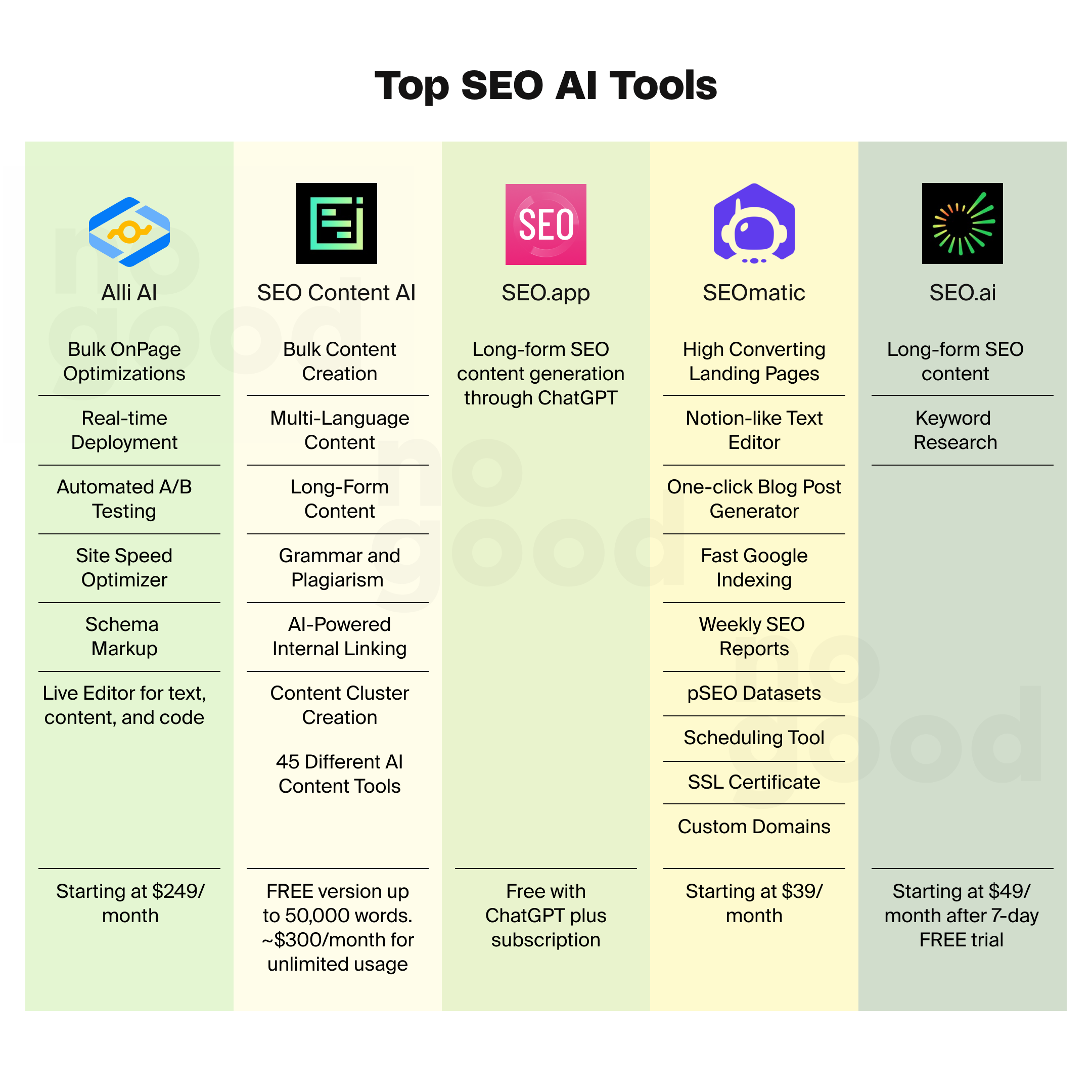
Use Cases in Keyword Research, Content Creation, and Optimization
AI has ingrained itself in fundamental areas of content strategy. We use advanced keyword research tool functionalities, which extend beyond conventional search volume analytics. These tools predict emerging trends, discern nuanced aspects of search intent, and tailor a list of keywords fitting for our target demographic. In content creation, AI-powered writing assistants offer suggestions that enhance readability, engagement, and inclusivity across content types.
AI paves the way for granular content optimization, managing tasks from semantic keyword integration to site-wide interlinking, contributing to an SEO strategy that’s both cohesive and universally accessible.
Importance of Answer Engine Optimization (AEO) in SEO
With a notable shift in user behavior toward voice search and digital assistants, Answer Engine Optimization (AEO) has gained monumental importance. AI systems trained to comprehend and generate human-like responses are becoming dominant for answering user queries directly. It is essential to include question-focused content aligned with AEO, designing our editorial calendar to feature these query formats, aiming to be the primary source for digital assistants.
Future Prospects with AI SEO Tools
Looking beyond the current AI solutions, the horizon of SEO tool innovation is expanding, promising to offer even more sophisticated capabilities that will revolutionize the way we approach content marketing strategy.
Tools for Identifying AI-Generated Content
New AI tools are emerging to distinguish AI-generated content from human-written pieces. This function not only aids in maintaining a unique voice and brand identity but also helps in tailoring content that is beyond the scope of existing AI capabilities—a crucial differentiation strategy in a saturated market.
Analyzing Content Sections Related to User Bounce Rates
Moreover, these innovative tools leverage machine learning to dissect analytics, spotlighting specific content sections that prompt user exit. Having the ability to focus on these precise areas fosters the creation of more engaging and relevant content, tackling bounce rates head-on for sustained organic traffic.
Conversion Rate Optimization (CRO) Tools
Finally, CRO tools powered by AI are transforming how we measure and enhance user interaction with our content. By analyzing patterns in user behavior, these tools provide actionable insights to elevate the user journey from initial click to conversion. This redefines the efficiency of our content types, ensuring they’re not just discoverable but also instrumental in achieving our digital marketing objectives.
Proven AI Strategies, Tools, and Prompts
Measuring SEO Content Performance
In the context of SEO, measuring content performance is critical to understanding the impact of your efforts and making data-driven decisions for future strategies. As we journey through 2024, let’s dive into the key performance indicators that SEO Managers should prioritize to gauge the success of their SEO content strategy accurately.
Traditional KPIs for SEO success
Organic traffic remains a primary leading indicator of SEO success, reflecting the effectiveness of a website in attracting visitors through unpaid search results. Similarly, observing keyword positions provides insight into the visibility of your SEO content for targeted search terms. Click-through rates (CTR) reveal the level of engagement that your search listings are generating, while conversion rates are the ultimate testament to the ability of your content to fulfill its intended business objectives.
Despite evolving SEO landscapes, the importance of these traditional metrics persists. They continue to serve as foundational pillars, offering insights into the baseline health of your SEO initiatives. Monitoring these KPIs closely reveals not just the performance trends but also signals areas requiring optimization or strategic pivots to boost your overall SEO content strategy.
New KPIs for 2024
The future of SEO calls for a broadened perspective on the metrics we consider when assessing performance. With new technologies and user behaviors emerging, here are several KPIs to watch in 2024:
1. Appearances in AI Answer Engines
With the increased prominence of voice search and AI-driven platforms, tracking appearances in AI answer engines is now essential. This KPI indicates whether your content is the go-to source for direct answers, showcasing your dominance in topical authority and influence in search engine optimization.
I use ChatGPT and Bard to identify what answers are being served and where each tool is pulling their data from. Once I know where each tool is pulling that specific data, then I can make sure that my content has visibility within that source.
2. Content Quality Scores
As search engines become more sophisticated in evaluating content quality, monitoring content quality scores helps ensure that your content meets the expeditious standards of search algorithm sophistication, offering a quantitative measure to adjust for high-quality content creation.
3. Mobile Page Performance
In line with Google’s mobile-first indexing, understanding the performance of your content on mobile devices is crucial. Metrics involving mobile page speed and usability, such as Google’s Core Web Vitals – Largest Contentful Paint (LCP), First Input Delay (FID), and Cumulative Layout Shift (CLS) – offer insight into the user experience on mobile. Improving these can contribute to better rankings and user retention.
4. SERP Features and Page Experience Metrics
The presence of your content in SERP features like featured snippets, local packs, or knowledge panels can dramatically increase visibility and traffic from search engines. Tracking your content’s performance in these areas, alongside page experience metrics that encompass usability and user satisfaction, provides a holistic view of the impact of your SEO efforts.
These indicators move beyond superficial analytics, offering deep insights necessary for evolving and refining an SEO content strategy that aligns with the complex interplay of user expectations and technological advances.
Your Partner For Blending User Experience and Organic Growth
Augmenting user experience and enhancing engagement are no longer peripheral aspects of SEO—they’re essential components. By strategically addressing Google’s focus on mobile experiences and engaging users through interactive and shareable content, SEO Content Managers can craft an enviable SEO content strategy that not only ranks well but resonates deeply with the audience it serves.





